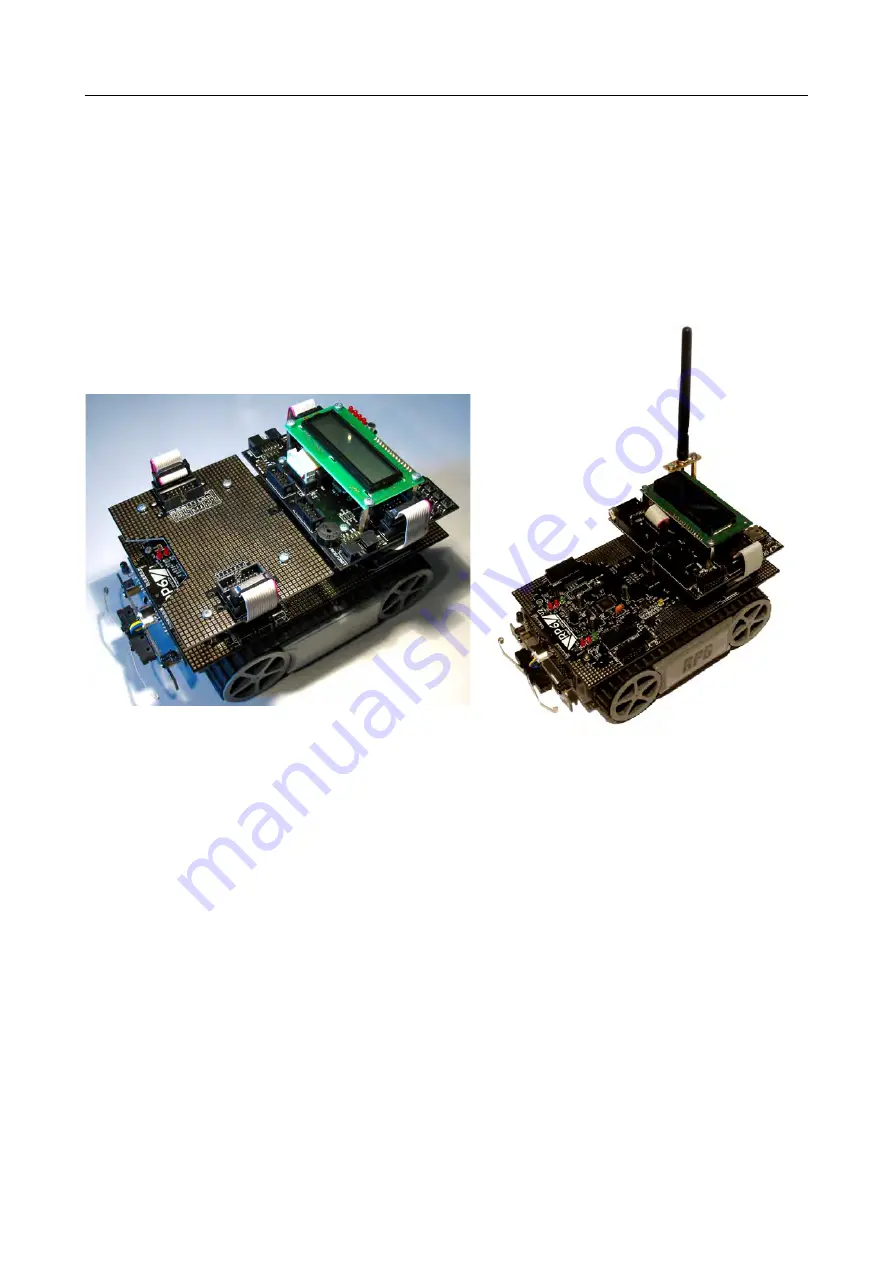
RP6 ROBOT SYSTEM - 1. Introduction
The RP6-M32 is the lowest cost option and adds another ATMEGA32, which runs at
twice the clock speed as the one on the Robot Base and has several free I/O ports. It
is also very well suited as an addtion to the two bigger expansion modules if the pro-
cessing power of one of these alone is not sufficient for certain sensors or one needs
more I/O.
The most powerful expansion module is the new RP6v2-M256-WIFI which will be re-
leased in 2012. Beneath the large ATMEGA2560 (16MHz, 256KB Flash, 8K SRAM) it
also contains a 2.4GHz 802.11g WLAN radio module. This allows you to monitor, con-
trol and remotely program the RP6 via a wireless computer network. The module fea-
tures 60 free I/O Ports with lots of special purpose interfaces like several ADC, PWM,
SPI and UART channels. With all these I/Os you can virtually use any sensor and
actor combination on the RP6. The microSD Card slot allows to add large data
storage of > 2GByte (e.g. for maps, data logging, websites, etc.).
On the two images on this page you can see the RP6 with two expansion modules (Ex-
periment PCB and RP6-M32 with LCD) and the new RP6v2 with RP6v2-M256-WIFI (of
course it can also be used on the old RP6!), Antenna and LCD. The new connectors
are shown in more detail in the appendix.
It is possible to combine the RP6v2-M256-WIFI, RP6-M32 and several of the experi-
ment PCBs – in total you would then have a Robot with 3 AVR Processors and around
80 I/O Ports for your applications. These can be connected to the Experiment PCBs via
flat cables, where you can add your own sensor electronics or ready to use sensor
modules (e.g. Ultrasonic or Infrared Rangers, Temperature, etc.). In such a setup the
strongest processor takes control of the Robot as I2C Bus master and the other two
are used as I2C Bus slaves.
For more information on the expansion modules, check the RP6 Website. There you
can find all related documentation and software.
- 9 -










































